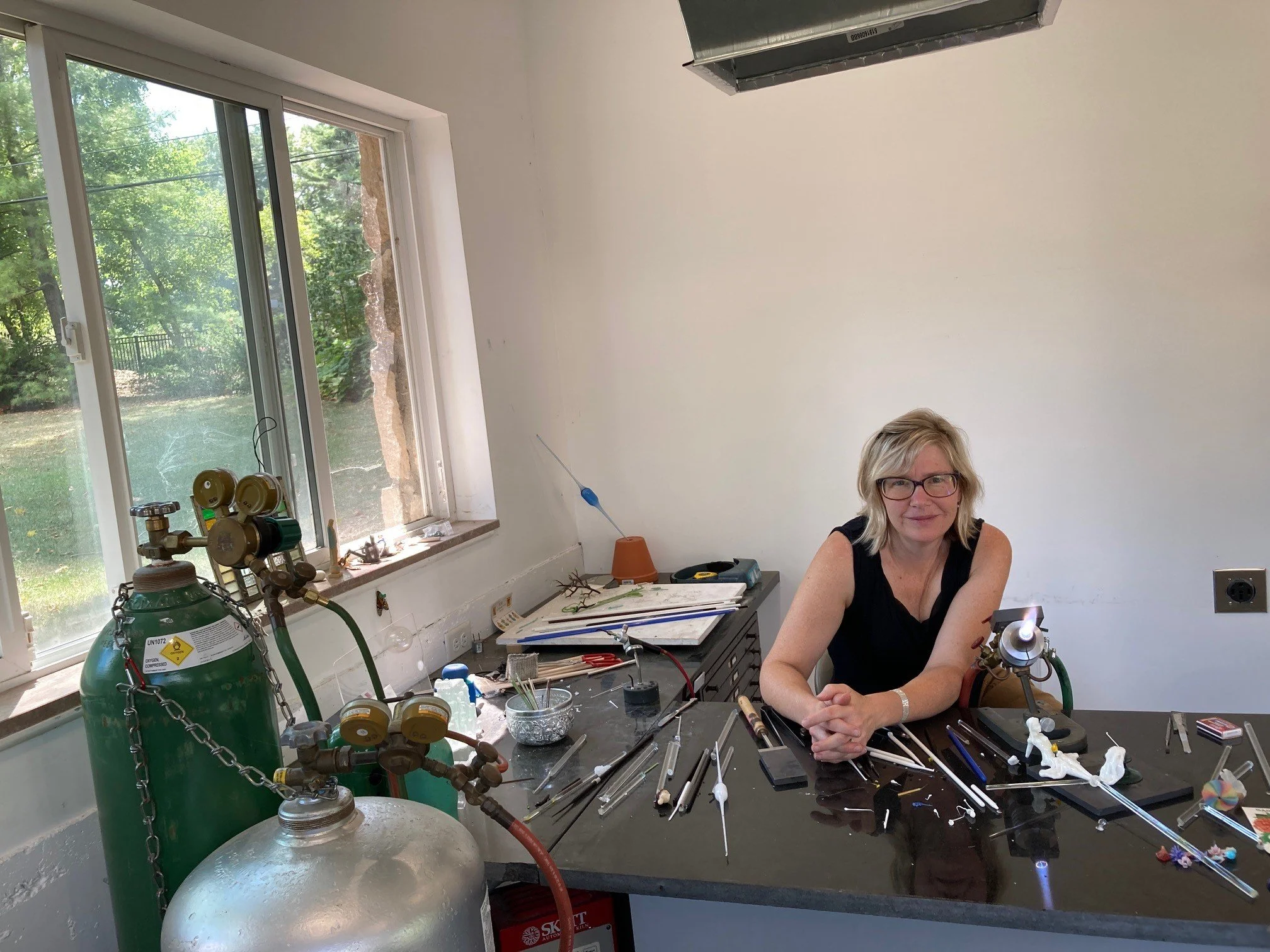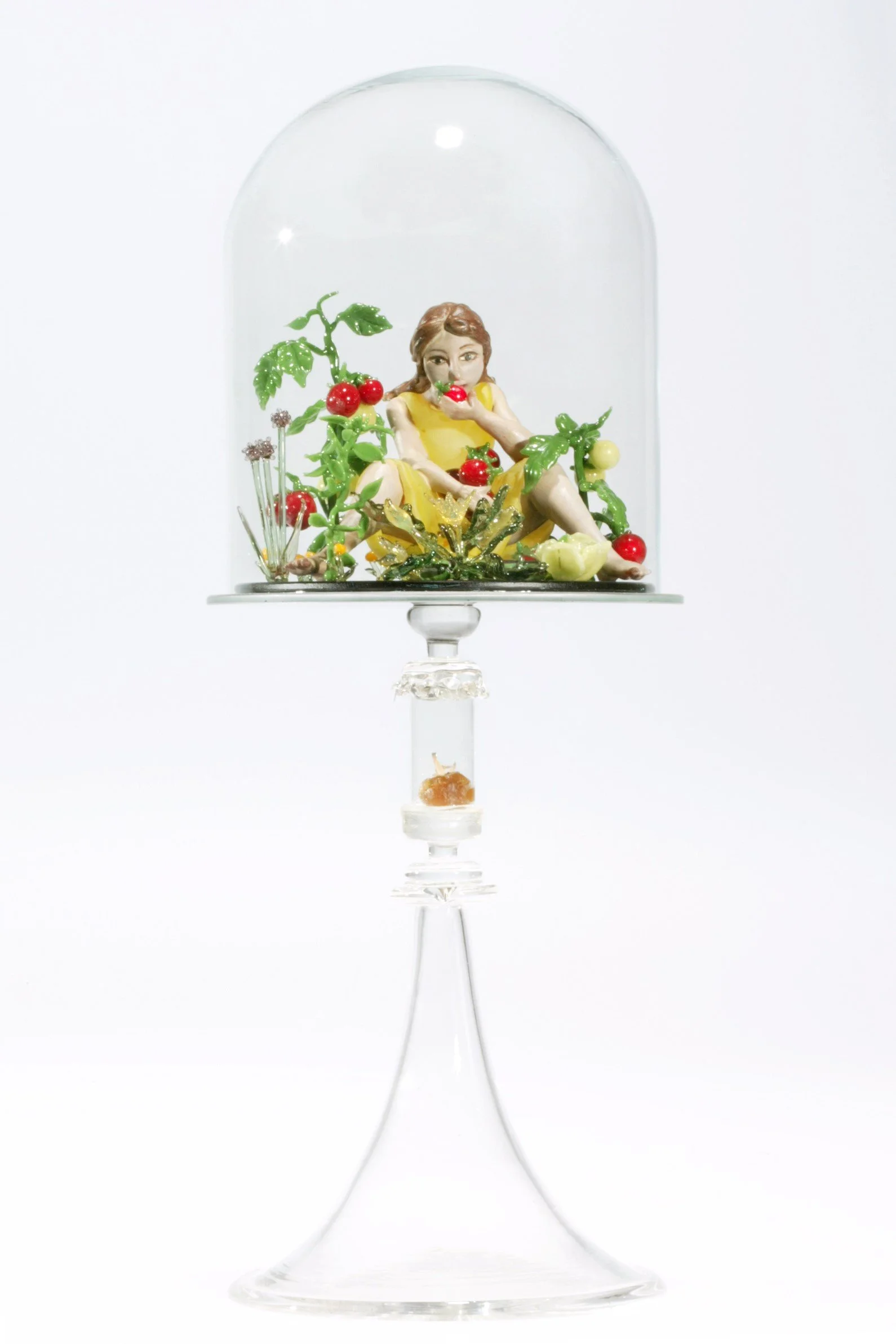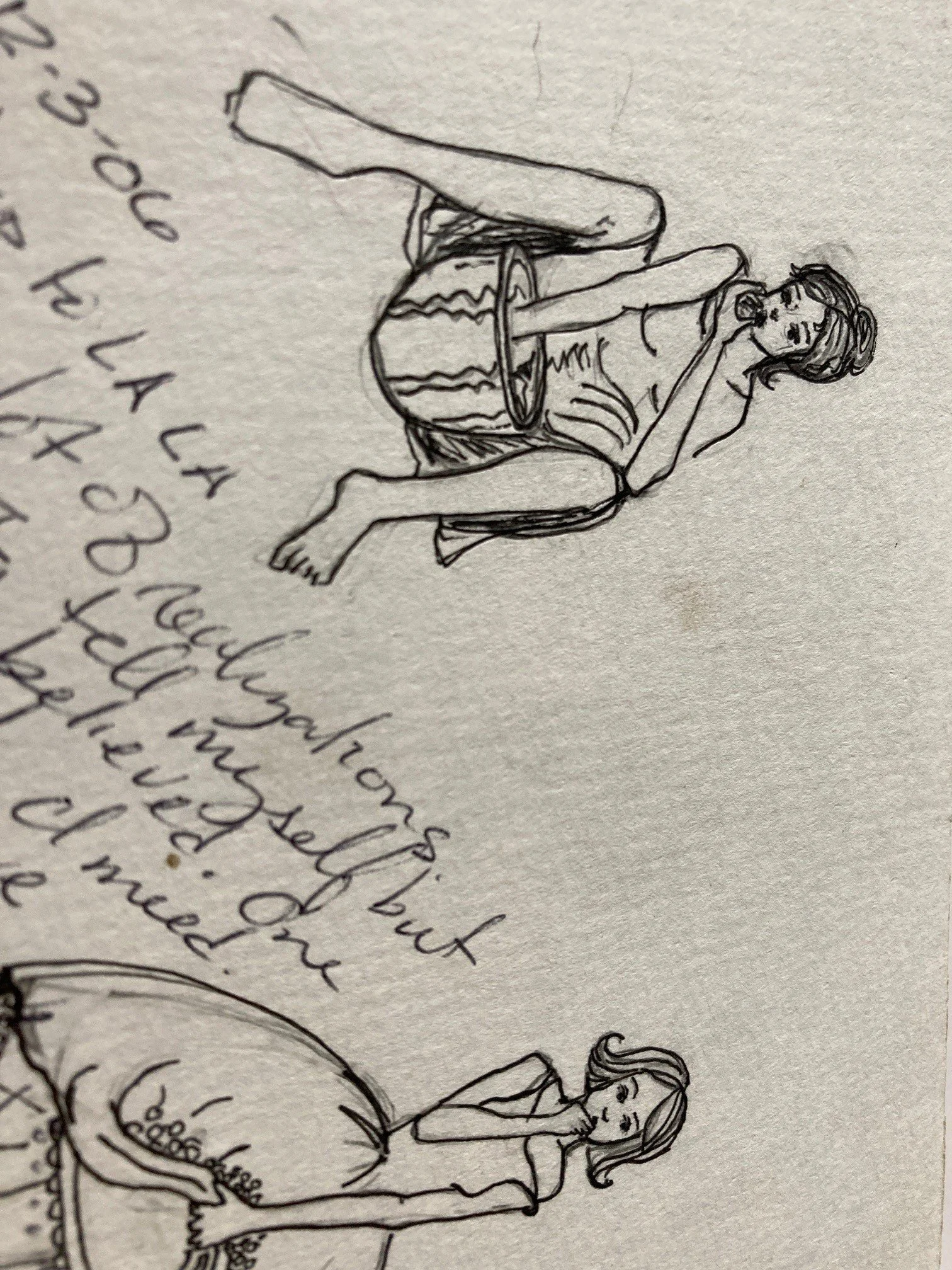"Out of the Vault: Soundtracks" with Carmen Lozar
Carmen Lozar in her studio. Photo courtesy of the artist.
Making art from glass is time-consuming. It is an undertaking that can unfold over hours, but more often takes place over days, weeks, or even months. A great music playlist can be essential to keeping focused and staying creative. These playlists were the starting point for our exhibition Out of the Vault: Soundtracks. MOG Curator Katie Buckingham sat down with Carmen Lozar to learn more about her work in the exhibition and her creative process.
Carmen Lozar (American, born 1971). Reliquary For My Everyday III, 2007. Flameworked and blown glass and tomato from my garden. 11 1/8 x 4 1/4 in. (28.3 x 10.8 cm.). Collection of Museum of Glass, Tacoma, Washington, gift of the Robert M. Minkoff Foundation. Photo courtesy of the artist.
KB: Tell us about Reliquary for My Every Day III.
CL: I started this series just after I got married. We were newlyweds and had just bought our first house. The first thing I did after we moved in was start a little garden. And so, the figure in the sculpture is in her garden. She stopped to appreciate a tomato. I tried to capture that time in the summer where they truly taste amazing.
KB: And the stem of the reliquary has an actual tomato in it. Is that from your garden?
CL: It is from that same garden! It was the tiniest tomato I’d ever seen, but I was so proud of it. By calling the series Reliquary for My Every Day, I was really trying to say, “Stop and appreciate these little, tiny things in your life.” Preserving that memory, that feeling, led me to reliquaries. If you go to Europe, Catholic churches have reliquaries with the bones from a saint’s finger, or a piece of cloth. I love that idea of displaying something where the object itself might be decaying, but it is actually the memory or story that is truly preserved.
Photo courtesy of the artist.
Photo courtesy of the artist.
KB: I love it. Let’s talk a little bit about your playlist. Do you listen to music while you work?
CL: I tend not to listen to music too much. Instead, I turn to audiobooks and podcasts. Flameworking takes a lot of focus, and you can get bored quickly. I need something that keeps me listening. But, putting together a playlist for the exhibition was so interesting – I thought, oh my gosh, these songs are all so narrative and they all tell a story. I think that, in that way, stories must travel throughout my psyche in terms of what I like to listen to.
KB: It’s so interesting that you say that – it confirms a pattern that has come up in these conversations. I’ve noticed artists who work outside of a Hot Shop tends to prefer an audiobook or a podcast.
CL: Really?
KB: Yes! And for the very same reasons that you just described – staying focused during a tedious, time-consuming process. However, anyone who works in a Hot Shop is likely to say: “I need tempo, I need momentum, I need to keep the crew upbeat.” With your work being so narrative-based, where do you look for inspiration? Are all of your pieces connected to your life?
CL: That’s a great question. Yes, there are lots of parts of my life in my work. But a lot of what I make goes back to the idea of narrative in general. I have a great love of children’s books. I have read to my children their whole lives. My mother was a puppeteer. I used to watch her puppet practices, and everything in our house was a stage and everything was a story. I find that I often pull from the novels I’m reading. A key sentence will trigger something and take me to another place.
KB: Do you do draw to prepare for your glass artwork?
CL: I do draw. In fact, my sketchbook looks exactly like my pieces. There is very little change between my initial sketches and the physical object. You could easily look at my sketchbook and connect it to every single piece I’ve ever made. (laughs) Sometimes I wonder if I should just do the drawing and be done with it.
Photo courtesy of the artist.
Photo courtesy of the artist.
KB: So, what about glass completes the process, then? Why not just stop at the drawing?
CL: I’ve been having this conversation with a few other artists lately. I am not sure it has to be glass. I think that it just needs to be 3D. I think I love working in three dimensions and get a great amount of pleasure of seeing something physically manifest itself in that three-dimensional form. To me, there’s a moment of adrenaline rush when you’ve completed the piece and it exists.
KB: What is on the horizon for you and your work?
CL: I am working on developing two new ideas in my work. The first are a series of candlestick figures. The candles are shaped like women, and some of them are in the process of lighting themselves. I have also been working on small scenes that include a piece of jewelry, which you can lift out and wear. I love jewelry, but during the day we always tuck it away in a box. I love the idea of having a small sculpture that revolves around a piece of jewelry, which you can remove and wear, but, at the end of the day, you can put it back within the sculpture and it fits into the scene.
KB: I love that. Another take on an everyday reliquary.
Check out Carmen Lozar’s playlist on Spotify, and visit us at Museum of Glass to see more of our collection featured in Out of the Vault: Soundtracks.
About The Artist:
Carmen Lozar has always loved visual storytelling; whether sad, funny, or thoughtful, her figurative artworks are primarily about celebrating life. Lozar is an artist and educator who lives in Bloomington-Normal, Illinois. She is the Gallery Director for the Ames School of Art at Illinois Wesleyan University. Lozar is represented by Ken Saunders Gallery.






